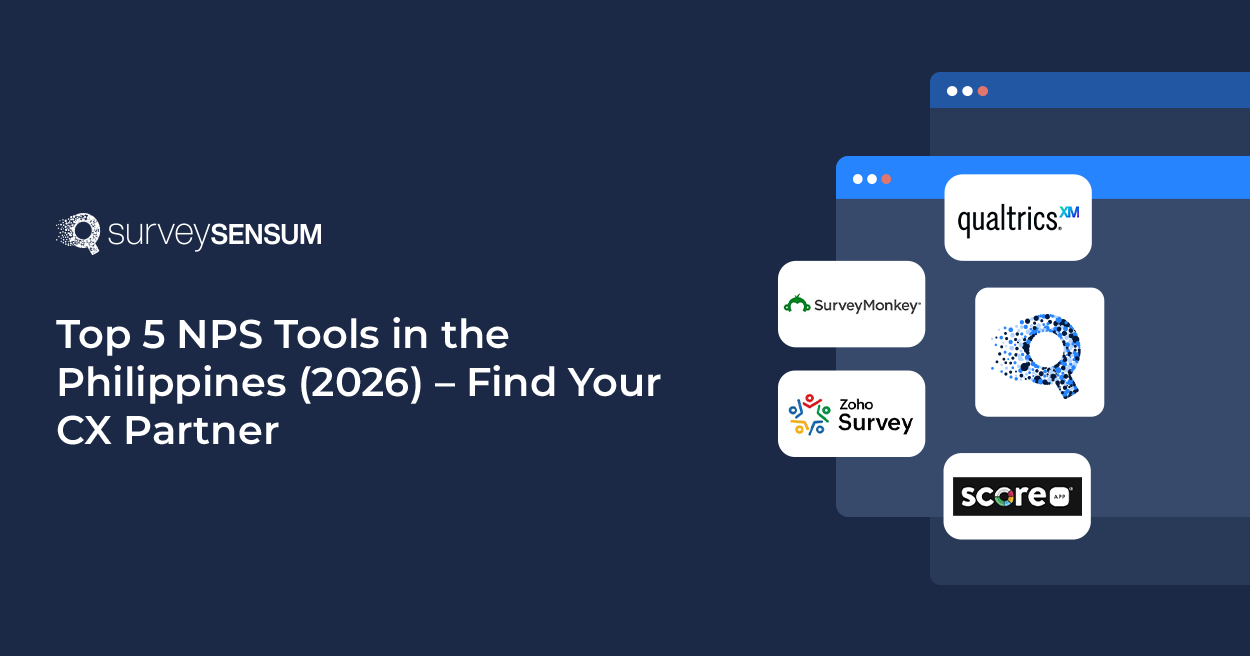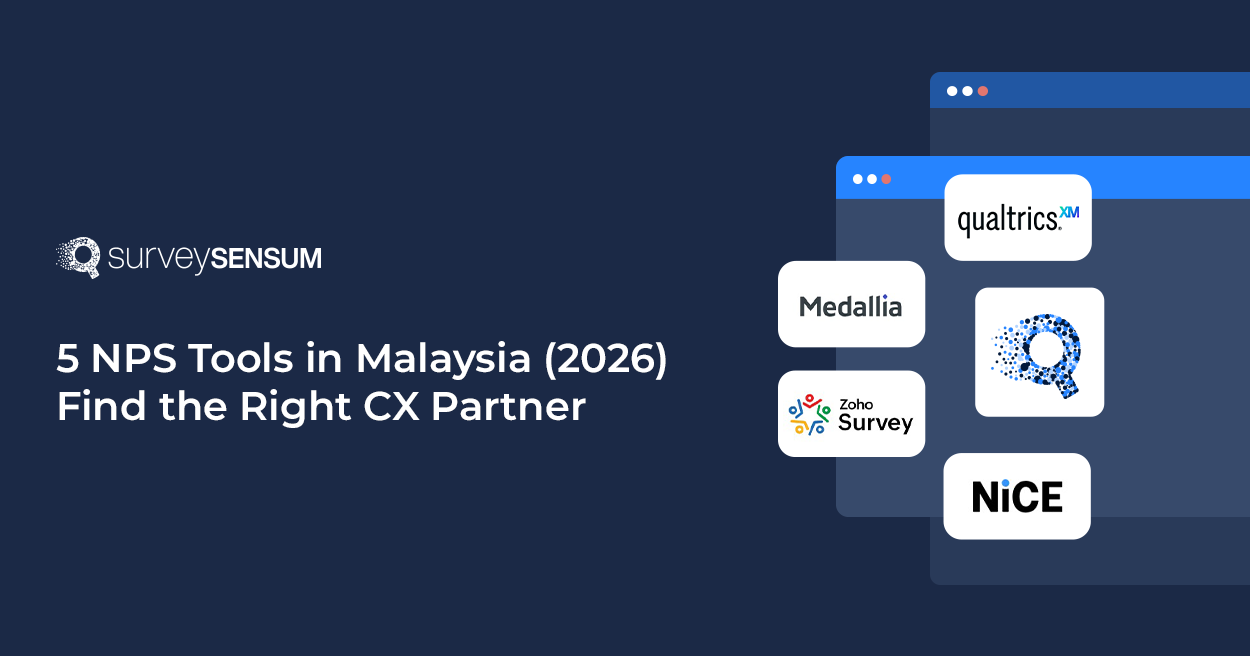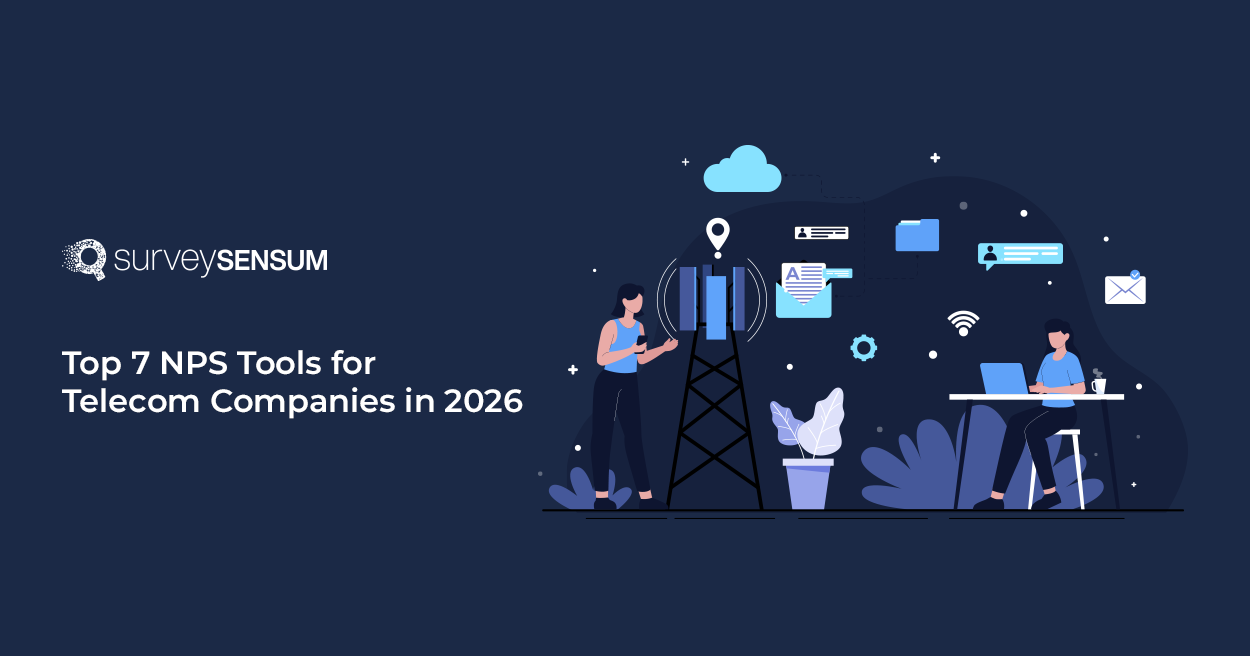

67% of consumers cite bad experiences as a reason for churn.
And the worst part is most of them do not even complain, they prefer leaving silently. And once they leave, we all know how difficult and costly it is to acquire new customers. In fact, it is almost 25 times more expensive than retaining an existing one.
So, how can a company, in this competitive market, avoid its customers from churning? Well, you can start by improving your customer satisfaction.
By improving your customer satisfaction you create a band of customers who are not just satisfied, but loyal to you. They are also not just one-time buyers; they become loyal advocates who repeatedly choose your products or services over competitors, contributing significantly to revenue streams.
But how to know if your customers are satisfied?
Well, the answer is simple- by launching CSAT surveys, tracking & measuring these CX metrics over time, and all this with the help of CSAT software, of course!
But before you jump into this process, let’s first understand the WHATs, WHYs, and HOWs of customer satisfaction that will help you easily navigate this journey.
But first thing first, let’s get to know what exactly is customer satisfaction.
What is Customer Satisfaction?
Customer satisfaction refers to the degree of contentment customers experience after interacting with a company’s products or services. It encompasses various aspects such as meeting or exceeding customer expectations, providing quality products or services, delivering excellent customer service, and resolving issues effectively and promptly.
Customer satisfaction is not merely about meeting basic needs but also about creating delight and exceeding customer desires, leading to loyalty, repeat business, positive word-of-mouth, and long-term relationships. It’s a critical metric that reflects the overall health of a business and its ability to meet customer needs and preferences consistently.
Why is customer satisfaction important?
72% of customers will share a positive experience with 6 or more people. Therefore, customer satisfaction is crucial for businesses across industries. Read on for some more compelling reasons:
1. High Business Performance:
Research by Deloitte and Touche found that customer-centric companies were 60% more profitable compared to companies that were not focused on the customer. This just proves the significant impact of customer satisfaction on business performance. Here are some ways in which customer satisfaction helps in enhancing business:
- Repeat Business: Satisfied customers are more likely to stay loyal to your brand and continue using your products or services – this leads to more business as happy customers are inclined to make repeat purchases, contributing to your revenue and business growth.
- Positive Word of Mouth: Satisfied customers become brand advocates, spreading positive word of mouth and attracting new customers.
- Reduced Churn: Higher satisfaction levels lead to lower churn rates, reducing the costs associated with acquiring new customers.
2. Competitive Advantage:
A reputation for excellent customer satisfaction sets your business apart from competitors, giving you a competitive edge. It is a key differentiator in a crowded market, attracting customers who prioritize a positive customer experience.
It reinforces your brand’s position in the market, fosters customer loyalty, and ultimately contributes to long-term business success.
3. Improves Business And Product Decisions By Identifying Where You Can Improve:
CSAT surveys give valuable insights that help you pinpoint areas where improvements are needed and uncover opportunities for innovation.
This significantly helps in shaping product roadmaps and highlights specific aspects of the product or service that require attention. This information aids in effectively catering to the expectations of the customers.
Now that you know the reasons behind the importance of customer satisfaction for a business, why wait? Launch, measure, and track your customer satisfaction metric with SurveySensum.!
4. Boosts Customer Lifetime Value:
Customer satisfaction plays a crucial role in enhancing CLV by fostering long-term relationships with customers and driving repeat business.
Here’s how customer satisfaction contributes to CLV:
- Higher Lifetime Spend: Satisfied customers are not only more likely to make repeat purchases but also tend to spend more over their lifetime with your business. This higher lifetime spend directly contributes to an increased CLV for each customer.
- Cross-selling and Up-selling Opportunities: When customers are satisfied with their initial purchase experience, they are more open to exploring additional products or services from your business. This presents opportunities for cross-selling and up-selling, further increasing the overall revenue generated from each customer and thus raising their CLV.
5. Enhanced Brand Reputation:
Positive customer experiences play a pivotal role in shaping and enhancing your brand’s reputation and credibility among consumers. Here’s how:
- Enhanced Brand Image: When customers consistently have positive experiences with your products or services, it creates a positive perception of your brand, leading to increased trust and loyalty.
- Tailored Marketing Campaigns: Armed with insights from customer satisfaction data, your sales and marketing teams can create more effective and targeted campaigns.
- Inbound Marketing Advantage: Positive reviews and testimonials from satisfied customers serve as powerful tools in inbound marketing strategies. They act as social proof and incorporating these into your inbound marketing efforts can attract new leads. It is also proven that positive reviews boost sales by 12.5%.
After knowing the importance of customer satisfaction, the question of how to measure customer satisfaction still remains. Well, read on!
How to Measure Customer Satisfaction?
Measuring customer satisfaction involves gathering feedback from customers to understand their perceptions, experiences, and feelings about your products, services, or interactions with your business. Here are several ways to effectively measure customer satisfaction:
1. CSAT Survey

Why Measure CSAT: CSAT Surveys gauge how satisfied customers are with a specific interaction, product, or service, providing actionable insights for improvement.
When to Measure CSAT: After customer interactions, transactions, or at regular intervals to track satisfaction levels.
Sample CSAT Questions:
- How satisfied are you with your recent purchase/service interaction?
- Did our product/service meet your expectations?
- How would you rate your overall satisfaction with our company?
- Were you able to achieve your desired outcome?
- Would you recommend us to others based on your experience?
Roll out CSAT surveys in under 10 minutes and boost your brand reputation with SurveySensum!
2. CES Surveys

Why Measure CES: CES Surveys measure the ease of customers’ interactions with your company, highlighting areas where you can reduce friction and improve customer experience.
When to Measure CES: After specific touchpoints or interactions where customers may encounter challenges or friction points.
Sample CES Questions:
- How easy was it to find the information/product/service you were looking for?
- Did our website/app make it easy for you to complete your task?
- How much effort did you have to put into resolving your issue?
- Were our support team able to address your concerns quickly and efficiently?
- Do you feel that our company values your time and makes things convenient for you?
→ Read more about what CES questions to ask your customers!
3. NPS Surveys

Why Measure NPS: NPS Surveys measure customer loyalty and likelihood to recommend your brand, providing insights into overall customer sentiment and brand advocacy.
When to Measure NPS: Measure NPS regularly, ideally after key touchpoints such as product purchases, support interactions, or service renewals, to capture timely and relevant feedback from customers.
Sample NPS Questions:
- On a scale of 0-10, how likely are you to recommend us to a friend or colleague?
- What is the primary reason for your score?
→ Read more about what NPS questions to ask your customers!
By using these questions in conjunction with CSAT, CES, and NPS metrics, you can gain a comprehensive understanding of customer satisfaction, identify areas for improvement, and foster long-term customer loyalty and advocacy.
Strategies To Improve Customer Satisfaction

1. Gather Customer Insights through Feedback Channels:
Beyond CSAT/CES/NPS, mature programs centralize signals from surveys, VoC/social listening, and qualitative research, then activate them across teams. When evaluating customer insights tools, prioritize easy adoption, integrations, knowledge hubs for insight sharing, and activation features that turn findings into decisions. Implement various feedback channels such as surveys, feedback forms, and social media reviews to collect customer insights. Encourage customers to provide feedback by making the process easy, transparent, and rewarding.
2. Maintain Round-the-Clock Availability:
Ensure that customer support is available 24/7 through multiple channels like phone, email, chat, and social media by deploying AI voice call agents to efficiently manage high call volumes and ensure every customer query is promptly addressed. Respond promptly to customer inquiries, issues, and complaints to show dedication to their satisfaction.
For instance, SurveySensum, a customer feedback platform, offers 24*7 support on all channels with an SLA of 2 hours.
3. Ensure Excellent Customer Service:
According to Salesforce’s fifth edition of the State of the Connected Customer report reveals that 94% of customers continue buying from the same brand that gives a positive customer service experience.
This just proves that ensuring excellent customer service is a cornerstone of achieving high levels of customer satisfaction and loyalty. By prioritizing and consistently delivering exceptional service, businesses can meet and exceed customer expectations, leading to positive experiences and lasting relationships.
4. Take a Proactive Approach:
Anticipate customer needs and address potential issues proactively before they escalate, using insights you have gathered from their past experiences. This proactive stance not only builds trust and loyalty but also leads to enhanced customer satisfaction as customers feel heard, supported, and confident in the reliability of the products or services they receive.
5. Get Real-Time Responses:
Ensure real-time responses as they play a crucial role in enhancing customer satisfaction by enabling businesses to address issues promptly and effectively. When customers receive immediate responses to their queries, concerns, or feedback, it demonstrates a commitment to customer care and responsiveness.
6. Personalize Customer Interactions:
Customize interactions based on customer preferences, history, and feedback to create personalized experiences. Use customer data to tailor recommendations, offers, and all communications. This makes customers feel valued and understood.
7. Regularly Assess and Improve Satisfaction Levels:
Measure customer satisfaction regularly using metrics like CSAT, NPS, and CES to track performance and identify areas for improvement. This regular assessment will give you insights into where you are lacking and what actions you can take to increase customer satisfaction levels.
8. Facilitate Cross-Departmental Communication:
Foster collaboration and communication across departments such as sales, marketing, customer support, and product development. It enables different teams to share feedback insights, align goals, and coordinate efforts effectively to ensure customer satisfaction. So ensure that customer insights are communicated to relevant stakeholders at the right touch points and facilitate a smooth delegation between departments to efficiently close the feedback loop.
By incorporating these strategies into your customer satisfaction initiatives, you can create a customer-centric culture, improve customer experiences, and build long-lasting relationships with your customers.
Conclusion
Customer satisfaction proves to be one of the most important aspects driving the continual growth of a business. Satisfied customers are not just one-time buyers; they become loyal advocates who repeatedly choose your products or services over competitors. This loyalty contributes significantly to revenue streams and enhances brand reputation.
One of the most effective ways to gauge customer satisfaction is through CSAT software, which helps measure how satisfied customers are with specific interactions, products, or services. And for this, you need to look no further than SurveySensum. With the help of this tool, you can roll out multiple surveys like CSAT, CES, NPS, etc to measure your customer satisfaction. Along with this, you also get CX consultation service from a CX expert to help you reach the heights of customer satisfaction.
FAQs
Customer satisfaction refers to the level of fulfillment and positive experience customers have after interacting with a company’s products or services. It’s important because satisfied customers are more likely to remain loyal, recommend the business to others, and contribute to its long-term success.
Customer satisfaction in project management ensures that deliverables meet customer expectations, fosters positive relationships, builds trust, and enhances the reputation of the project team and organization. It’s a key metric for project success and client retention.
The main objective of customer satisfaction is to ensure that customers have a positive experience and are happy with the products, services, or interactions they receive from a business. Satisfied customers are more likely to become repeat buyers, and brand advocates, and contribute positively to business growth.
Ready to boost your customer satisfaction? Leverage SurveySensum to gather actionable insights and drive your business success!

















